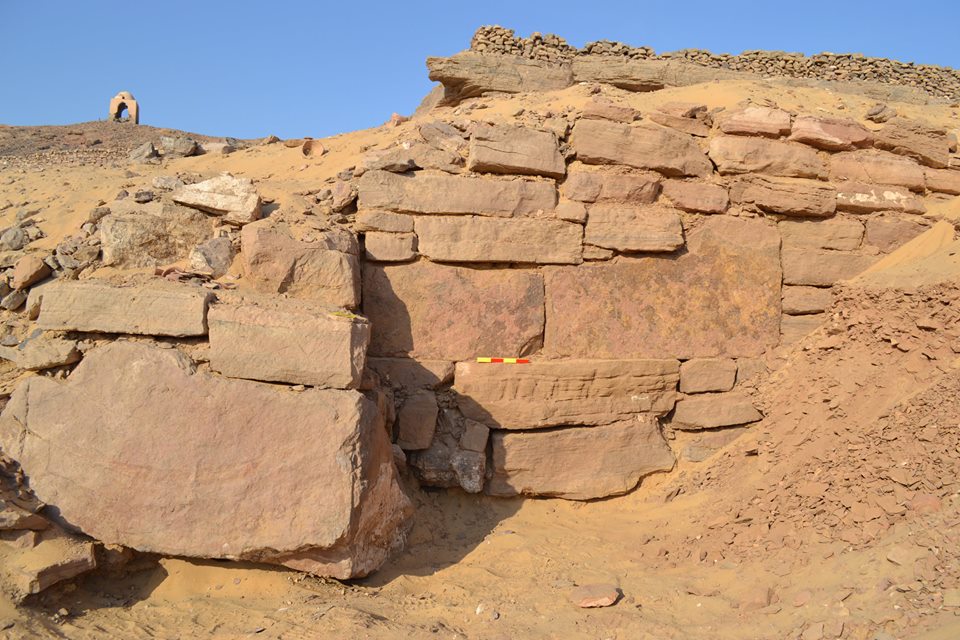
Egypt's Ministry of Antiquities said Wednesday that archaeologists found compelling evidence for new tombs at Qubbet el-Hawa in Aswan.
The head of the Ancient Egyptian Antiquities department at the ministry, Mahmoud Afify, announced the discovery of a two-meter high ancient encroachment wall below the visitors’ pathway in the northern part of the West Aswan cemetery at Qubbet el-Hawa.
The discovery was made by the archaeological mission from the University of Birmingham and the Egypt Exploration Society (EES) Qubbet el-Hawa Research Project (QHRP), directed by Martin Bommas of the University of Birmingham, a statement for the ministry said Wednesday.

Afify explains that the newly discovered wall indicates the architectural support of the known tombs of the first upper terrace, including those of Harkhuf and Heqaib, who were governors of Elephantine Island during the Old Kingdom.
Owing to the landscape of Qubbet el-Hawa, the support wall helped to secure the hillside, and thus lower lying tombs, which were accessible by a causeway leading to a second terrace.
Nasr Salama, General Director of Aswan and Nubia Antiquities, describes the discovery as “stunning” adding that it is now only a matter of time until new tombs are uncovered within the important cemetery.
Eman Khalifa, director of the pottery project within the QHRP, explains that the stone wall was dated by the pottery shreds embedded within the mortar used to build it. She said that the crushed pieces include parts of carinated bowls, executed in a style typical of the reign of King Pepi II from the Sixth Dynasty (circa 2278-2184 BCE).
The find was part of the project's successful first field season, which included the recent discovery of the long sought causeway of Sarenput I, thought to have been the first governor of the area at the beginning of the Middle Kingdom.




